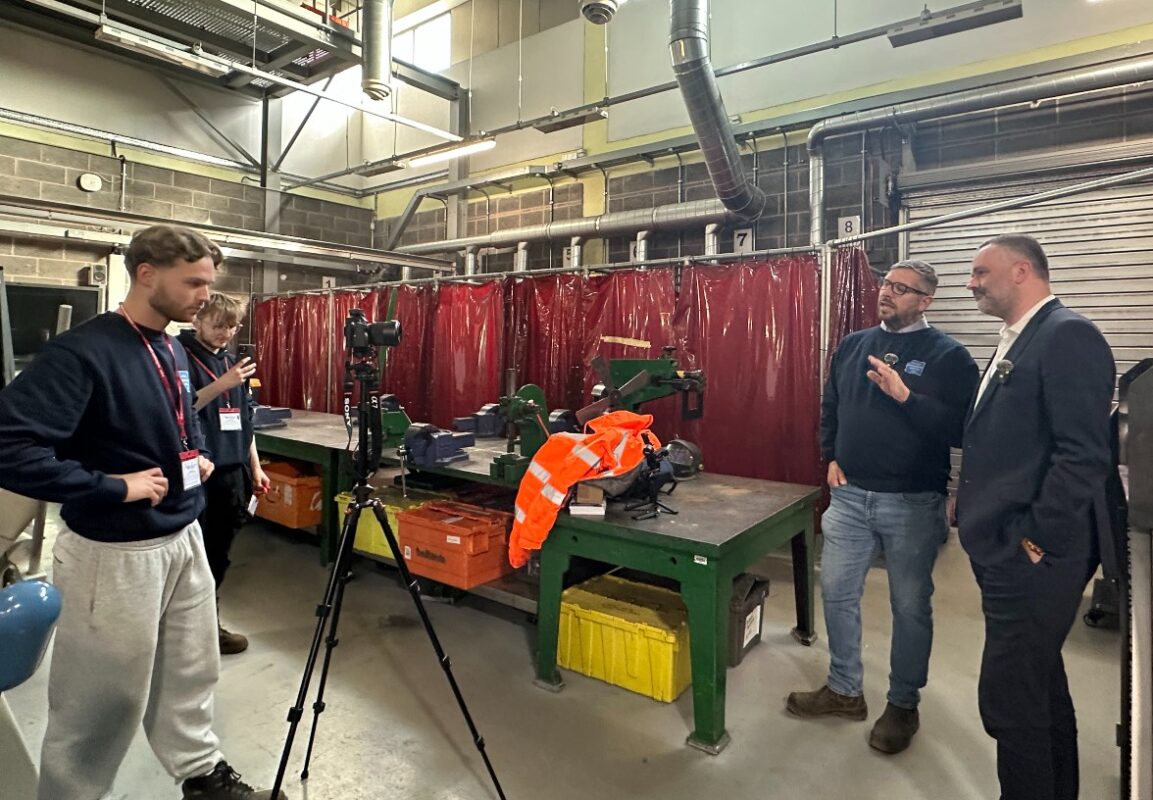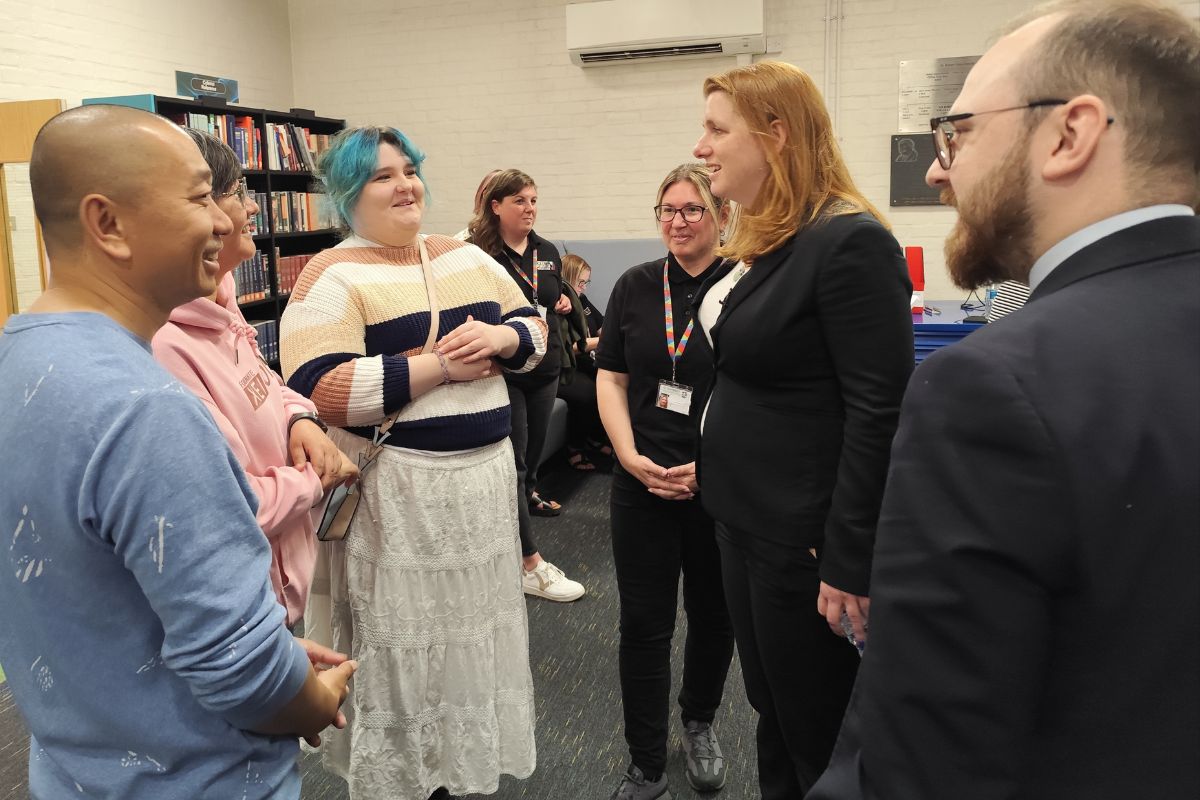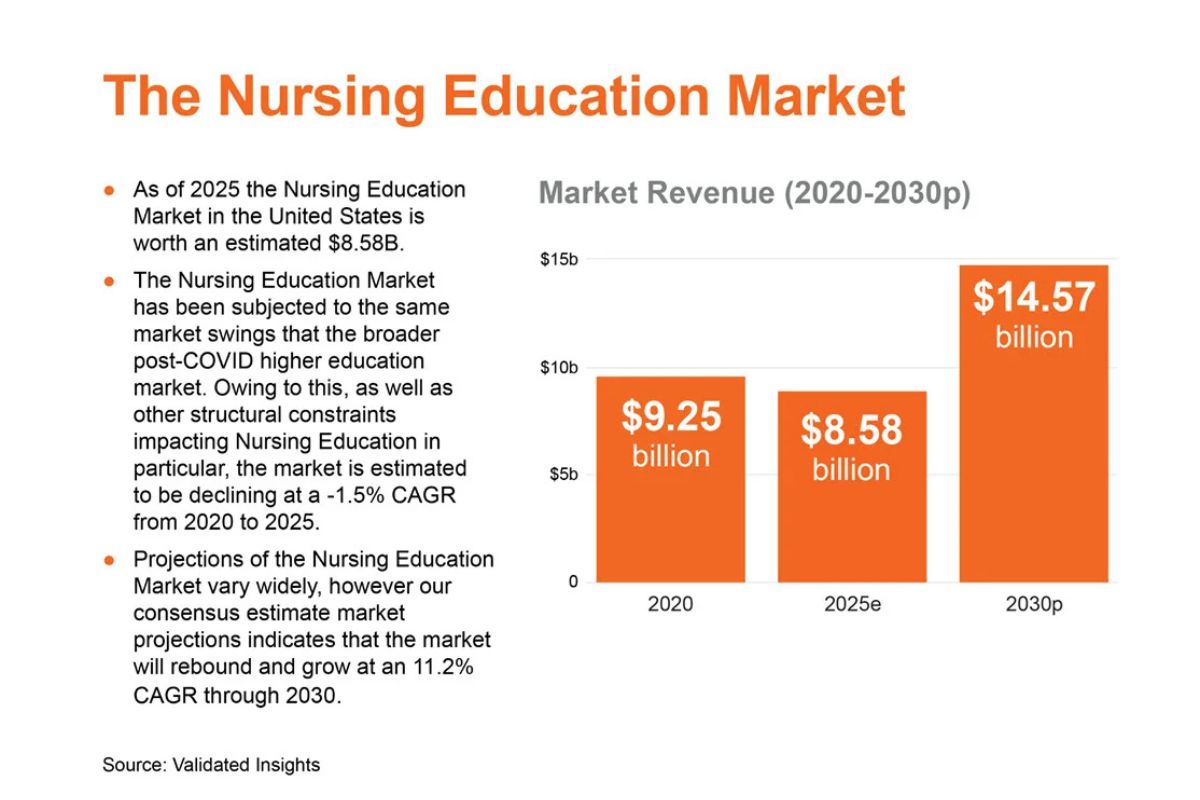Once Upon a Maths Resit

The FE sector’s GCSE Maths resit programme is now in its 10th year. It’s fair to say we haven’t seen much in the way of exam success in that time. Certainly, if we include the various Functional Skills certificates that have sprung up along the way, and the recent approaches taken to apprenticeship modules, then achievements have been made: but what of the overall goal? What about the elusive Grade 4+ Pass?
Recent requests made to Ofqual under the freedom of information act, highlight the true scale of this issue and invite us to think again about the approach that’s been taken so far. All statistics from Ofqual 2023:
“So, what exactly does anyone need to know this for then?”
It was a good question. If only more people would ask it. Her teacher had just finished giving an off-the-cuff explanation as to what the graph of a quadratic equation might describe, and was about to say something about the solutions, when Freya, one of the girls from the infamous back row 4, had decided to articulate something he knew the whole class was thinking: why, at the end of the day, were they doing this?
“I mean, I’m pretty sure I’m never going to actually use this stuff, am I?” She added reasonably.
And she was right: the particular “this” she was referring to was algebra and she would almost certainly never use it. Very few people do. When she wasn’t in college, Freya had a part-time job with a guarantee of full time work as soon as she was free to take it. This wouldn’t be for another year or so, because instead of getting on with what she really wanted to do, which was to earn some proper money, she was (as far as she saw it) wasting her time at North-South College of Further Education, in a compulsory maths class.
“And as for whatever you’re doing on the board there… you know that’s the first time I’ve ever actually seen a maths teacher do maths in front of me, right? I guess it’s interesting and all that, but where’s the PowerPoint slides?”
He figured he had two choices at this moment: he could say something about learning for learning’s sake, and perhaps add a statement or two about the benefits of thinking concisely and logically, and about how these skills are supposedly honed by algebraic practice (though that particular fantasy had been destroyed the first time he’d watched an academic try to put a shelf up), or he could say what he really thought about the State’s attitude to mathematics…
Long, long ago, in a galaxy far, far away….
Long, long ago, in a galaxy far, far away… people bought goods weighed at 16 ounces to a pound, 14 pounds to a stone and 112 pounds to a hundredweight. They traveled distances made up of 12 inches to a foot, 3 feet to a yard, and 1,760 yards to a mile. They paid for things in a currency of 12 pennies to a shilling, and 20 shillings to yet another pound, that once upon a time had also referred to weight, but did no longer.
In this world, cash tills were used merely for stashing the paper and coin tokens they used to represent value. Electronic financial transactions were strictly science fiction, as were portable adding machines. The shopkeepers who used the tills, and the shoppers who used the shops, had no option but to work out the value of purchases and any change due (in their heads) or sometimes (embarrassingly) on paper. In such a world, the ability to perform fast and accurate mental arithmetic was therefore vital.
On Earth, in the here and now of the 21st century, there were until very recently, roughly 130 Members of Parliament who’d grown up and gone to school on the imperial planet just described. Although not a single one of them was anything we could refer to as a mathematician, the decision as to what a mathematical education should look like, has historically been theirs to make.
Of the roughly 300,000 students who fail to achieve the grade 4 pass every year, 98% of them are foundation tier students
Equating numeracy with mathematics has the effect that when State primary students start lagging behind their peers with times-tables and fractions, they’re immediately labelled as “poor with maths” and their journey toward GCSE exam failure begins. Of the roughly 300,000 students who fail to achieve the grade 4 pass every year, 98% of them are foundation tier students: an allocation made upon enrolment at secondary school, based on this primary performance.
No mathematician believes the ability to recall times-tables, or perform mental arithmetic, displays any mathematical skill whatsoever. Most mathematicians recoil from the prospect of using their delicate minds for anything as brutal as calculating. That’s what the mathematically minded engineers of the past spent so much energy inventing machines such as pocket calculators, smartphones and laptops for, and thanks to one excessively tidy-minded individual, we know that a decimalised currency, ranked into ones, twos, and fives, enables any amount to be made up using the minimum amount of cash. This form of currency has been in use since 1971 in the UK, where we’ve also been converting to the less cumbersome metric system of weights and measures, since 1965.
Where does the fear of mathematics come from?
On the second page of his book: A Mathematician’s Delight, mathematician WW Sawyer wrote the following: “The fear of mathematics is a tradition handed down from days when the majority of teachers knew little about human nature, and nothing at all about the nature of mathematics itself. What they did teach was an imitation.”
Given that this book was first published in 1943, and given that the author is clearly referring to an issue already in existence, we should conclude that the problems we see today surrounding the State education of mathematics, have essentially existed for as long as State schools themselves. As such, the root causes of these problems are not easy to specify, are certainly more complicated than criteria such as the Fisher Family Trust report encapsulates, and are deeply entrenched in our societal memory.
On December 4th 2014, the UK government introduced a condition of funding to the FE sector that required all post 16 students still in State education, to continue studying for the GCSE certificate in mathematics, until they achieved the minimum grade 4 pass (if they didn’t already have one).
Repeating patterns
To illustrate the scale of the problem created by this decision, in 2023 there were a total of 781,980 students entered for the GCSE maths exam somewhere in England, and of that number 317,565 (40%) failed to achieve the grade 4 pass: 310,895 of these were the foundation tier students previously mentioned. In the same year, the FE sector entered a total of 121,965 students for the same exam, and 105,855 (87%) failed it again, for at least their second attempt. These numbers have been repeated yearly for a decade.
Whilst certain so called “stepping stone” qualifications exist, they do not replace the GCSE: they merely delay it. For example, any student gaining a Functional Skills certificate in their first FE year, will still be required to study for the GCSE in their second. The never-ending nature of this requirement is intolerable for many students, and sadly a growing number decide to quit education altogether, rather than continue with mandatory maths classes. Given all the fantastic alternative opportunities the FE sector has to offer, we should see this as nothing short of a tragedy.
You have to want to do it
Mathematics consists of a set of skills acquired in much the same way as artistic or musical skill, where proficiency only comes as a result of independently motivated and self directed study. In other words: you have to want to do it. To a mathematician, mathematics belongs with the Humanities, and is essentially a philosophical endeavour. To a mathematician, the idea that a genuine mathematical education can be forced onto an unwilling student, is delusional.
Such comments open the door to much debate, and many differing, strongly held opinions exist. What is unarguable, however, is that thousands of students are today being failed by a system that is no closer to delivering a meaningful mathematical education to all, than at any time in its history.
The UK is perfectly capable of teaching mathematics. Universities and State primary and secondary schools regularly make an excellent job of it: as evidenced by the fact that the UK has always punched well above its weight internationally, in all of the mathematical sciences.
However, when it comes to diagnosing and fixing the issues currently playing out in the FE sector’s enforced resit program, there is one feature of the National Curriculum that exacerbates rather than remedies the social divide in maths achievement that has existed since the beginning: namely, the two-tier exam route already alluded to.
There are two equally valid routes to the GCSE grade 4 pass certificate: the higher and foundation tier. Since this is one of the most important issues affecting exam outcomes, it should be managed carefully. However, in stark contrast to both the results data, and any mathematical reading of the papers themselves, the educational establishment maintains the belief that weaker students find the foundation paper easier to pass.
Virtually all FE resit students are re-entered for the foundation paper that 90% will fail again
The facts are: that 70% of all those entered for the foundation paper fail, whilst 98% of higher paper entrants, pass. Every year, virtually all FE resit students are re-entered for the foundation paper that 90% will fail again. By comparison, three quarters of all privately educated students are entered for the higher paper, that virtually every student (private or State), passes.
One very obvious explanation for this, is that the grade 4 pass threshold is a mere 20% for the higher paper, as against 60% for the foundation. Claims that this is offset by the relative difficulty of each, must be seen in the light of the following guidance from Ofqual:
“Students entering the higher tier in the reformed qualifications are able to access grades 9 to 4 (with an allowed grade 3 for students scoring a small number of marks below the grade 4 boundary), and students entering the foundation tier are able to access grades 5 to 1. The tiers of the reformed qualifications will therefore overlap at grades 5 to 3, and there is a requirement for at least 20% of the marks on the papers to be common across the two tiers.”
From: GCSE Mathematics: understanding schools’ approach to tiering, February 2017, Ofqual/17/6155
The 20% of marks described as being common across the two tiers, equates to the pass mark for the higher paper. The cohort-referenced grade boundary system guarantees the existence of grades 1 to 3, and therefore guarantees that approximately one third of all entries will fail to achieve the minimum grade 4 pass. This virtually ensures that a student who was streamed for the foundation tier in mathematics upon their arrival at secondary school, predominantly from the lower rungs of the socio-economic ladder, will fail the GCSE maths exam, and then find themselves in a mandatory maths class at an FE college. This only serves to disenfranchise less well off students from education, with all its undoubted benefits. A survey of current maths retake students, would confirm that this reading of the situation is exactly what transpires.
We should at the very least be testing all students by the same criteria
If, as a society, we genuinely believe the GCSE maths certificate to be as vitally important as is the case, we should at the very least be testing all students by the same criteria.
Freya’s question still hung in the air. Anyone unfortunate enough to still be reading, will know it has yet to be answered. Just where were those damned PowerPoint slides?
Though they didn’t know it, on top of everything that Freya and the rest of this class had been through, they’d now been lumped with a university lecturer for a teacher, instead of a qualified one. What that meant, was that they were being introduced to mathematics for the very first time in their lives. Their teacher, you see, refused to accept that the inability to become infatuated with fractions aged 10, meant geometry couldn’t be appreciated at 17. Neither did it mean that the intuitive connections that exist between geometry, algebra and arithmetic, couldn’t be understood. And so it was, that whether they needed it or not, the story required to get them through the higher paper (which their teacher secretly schemed for them to excel at) was being painstakingly explained from scratch, as if they were all sitting in a university lecture hall, watching maths being done properly, by a mathematician. And whilst this teacher’s students, colleagues, managers and Ofsted inspectors were often mystified by his approach, it would all become clear on results day.
By Grant Hubbard, BSc(Hons), MSc(MRes) Mathematics, Author, University and College Lecturer in Mathematics











Responses